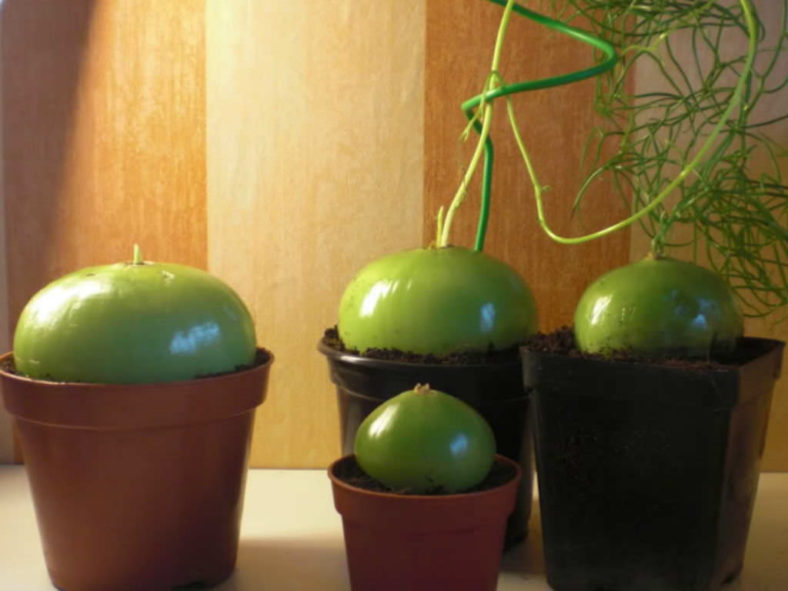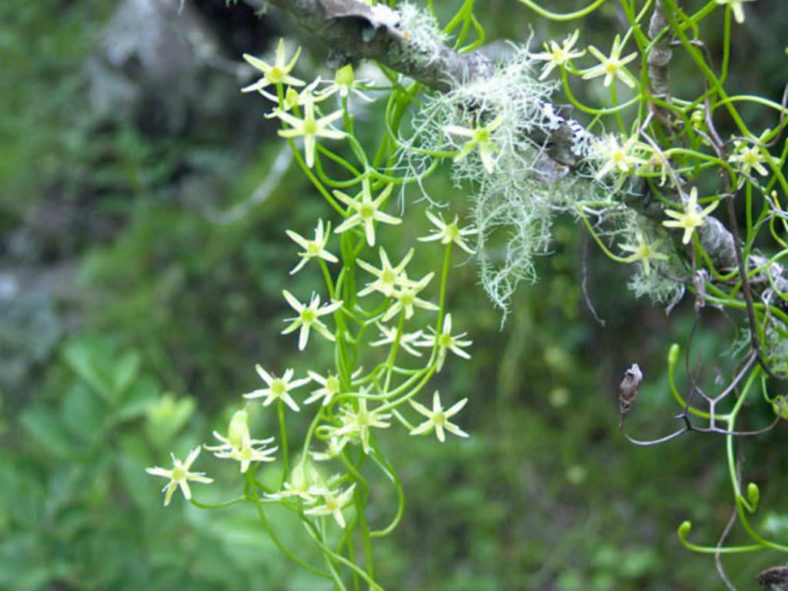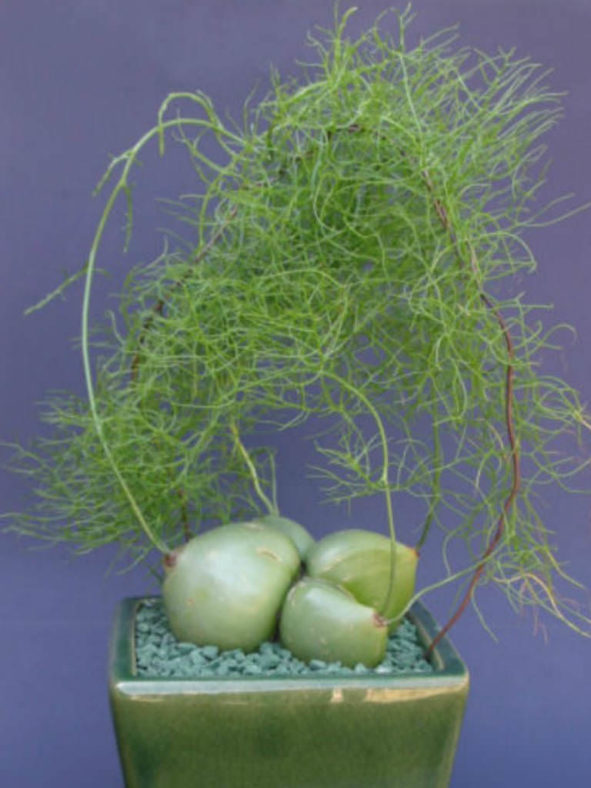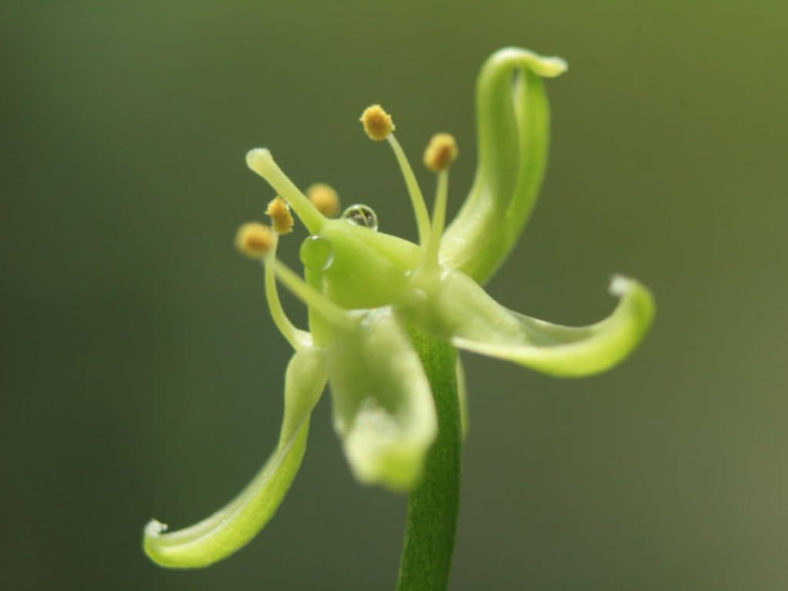Scientific Name
Bowiea volubilis Harv. ex Hook. f.
Common Name(s)
Climbing Onion, Sea Onion, Climbing Potato, Zulu Potato
Synonym(s)
Ophiobostryx volubilis, Schizobasopsis volubilis
Scientific Classification
Family: Asparagaceae
Subfamily: Scilloideae
Genus: Bowiea
Etymology
The specific epithet "volubilis" (pronounced "vol-OO-BIL-iss") means "that turns itself around, turning, spinning, whirling, rolling, revolving" and refers to the growth habit of the branches of this species.
Origin
Bowiea volubilis is native to South Africa, Zimbabwe, Zambia, Malawi, and Tanzania.
Description
Bowiea volubilis is a deciduous climber with a pale green, onion-like bulb that is half-buried in the soil. The bulb can grow up to 10 inches (25 cm) in diameter. Each year in late winter, the bulb develops a new green, scrambling or twining flowering stem. The stem is covered with many leafless side branches that may fall off.
The flowers are small, star-shaped, greenish or white, and appear in spring. They can reach a diameter of up to 0.4 inches (1 cm).

Hardiness
USDA hardiness zones 10a to 11b: from 30°F (-1.1°C) to 50°F (10°C).
How to Grow and Care
The best medium for growing Climbing Onion is a gritty, well-draining soil mixture. If you wish to make your own mixture, combine half potting soil and half sand. Choose a pot with drainage holes, as excess moisture can cause the bulb to rot.
Climbing Onion likes to be in a crowded pot, so select one barely larger than the bulb. Place the container in full but sheltered sun or partial shade. Excess heat will cause the bulb to callus over and become dormant, while even consistent warmth and moderate moisture will allow the plant to grow all year.
Overwatering is a primary concern with this plant. Best growth is achieved with moderate and consistent moisture, but never let the plant sit in water and allow the soil to dry out between waterings. Stop watering thoroughly when the stalks dry out after blooming in late summer. At this point, you can cut off the spent stems when they begin to dry out and brown. Resume watering when the bulb re-sprouts, generally in the fall.
In summer, you can move the plant to a sheltered area outside as long as it is kept above 50°F (10°C). Supplemental feeding is not a necessary part of Climbing Onion care. Provide the airy green stems with a support structure, or simply allow them to tangle around themselves. Divide the offsets when they are half the parent plant's size and pot them in the same soil mixture.
Links
- Back to genus Bowiea
- Succupedia: Browse succulents by Scientific Name, Common Name, Genus, Family, USDA Hardiness Zone, Origin, or cacti by Genus
Photo Gallery
Click on a photo to see a larger version.


